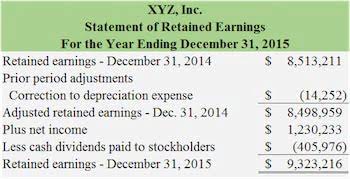
Understanding these two vital components of a licensing deal can help you create an agreement that’s a “win” for all parties. Reach out to us today and learn how we can help your company by scheduling a quick introductory call. In the third case when the actual royalty amount exceeds the minimum rent and short working is recouped then the entries https://www.bookstime.com/ will look like this for lessor. In the third case, when the actual royalty amount exceeds the minimum rent and short working is recouped, then the entries will look like this for lessee.
Beyond Royalty Revenue: Measuring ROI from Licensing
- Royalties often rely on forecasts and estimates, particularly when royalties are based on future outcomes.
- The significance of royalty accounting extends beyond mere compliance; it’s about ensuring fair compensation in an increasingly digital economy.
- We have a royalty report template we use, although some licensors may use an online royalty reporting system like Royalty Zone, Brand Comply or Dependable Solutions.
- Most structures involve determining payments based on a percentage of the revenue or profits earned from using the IP.
- There are two parties in royalties accounting; the lessor and the lessee.
Revenue earned from royalties is recognized in accordance with accrual accounting principles, where revenue is recognized when it is earned, regardless of when cash is received. For royalties, this means that income is recorded during the period that a licensee uses a licensed asset and generates sales or other revenue from it; this might not be the same period in which payments are made. This accounting practice ensures that financial statements reflect the true economic activity and health of a business by matching the revenue earned with the expenses incurred to generate that revenue within the same period. On the other hand, cash basis accounting recognizes revenue only when cash is received, regardless of when the actual right to receive that revenue is established. This method is simpler and may be suitable for smaller businesses or those with significant fluctuations in cash flows.
- Suppose at the end of the first accounting period 500 video games have been sold.
- Publishers often negotiate royalty rates with authors, which are typically based on a percentage of the book’s selling price or net receipts.
- For example, in the publishing world, writers are paid according to sales of a title only after the cost of printing and marketing has been paid.
- Similarly, directors earn royalties when their films or TV shows are syndicated or distributed internationally.
- Royalties are typically agreed as part of licensing agreements between a licensor and the licensee.
Step 2: Calculating royalties
- This allows them to evaluate the financial impact of royalty arrangements and make informed decisions or assessments about the company’s financial position and performance.
- This adjustment is crucial for presenting an accurate picture of the company’s financial performance, ensuring that revenue recognition aligns with the actual economic benefits derived from the licensing agreement.
- The reporting process begins with the accurate recording of royalty agreements in the financial statements, which must clearly outline the terms, rates, and bases for royalty calculations.
- This allows users to understand the impact of licensing agreements on specific business segments.
- The music industry’s royalty accounting is multifaceted, reflecting the diverse ways in which music is consumed.
The licensee pays royalties based on the sales or usage volume of products incorporating the patented technology. Proper reporting and disclosure of royalties not only comply with accounting standards and regulatory requirements but also provide transparency and useful information to stakeholders. This allows them to evaluate the financial impact of royalty arrangements and make informed decisions or assessments about the company’s financial position and performance. If royalties are significant to the financial performance of a specific segment or business unit, companies may need to accounting for royalty payments disclose segment-specific royalty revenue or expenses in the segment reporting section. This allows users to understand the impact of licensing agreements on specific business segments. If the royalty payments involve different currencies, fluctuations in exchange rates can impact the calculation and allocation of royalties.
Royalty Income Accounting Example – Licensor

Without these educated guesses, businesses would be working blindly, unable to see potential money problems or opportunities coming their way. Royalty Advances – These payments are given to a creator before they are actually earned, meaning that the royalties earned are balanced against the advance until the advance amount is paid off. The unearned balance will appear as a negative balance forward until the earn-out point is reached. Income statements comprise of revenue accounts, which show the money coming in to your business; and expense accounts, which show the money going out. On a balance sheet, there are assets – the things that add value to your business, like cash; and liabilities – the things that detract value from your business.

Unpaid royalties cause a balance to be carried forward as well when accounting for royalty payments. Imagine that a software business licenses its patented technology to a medical device business. The royalty agreement stipulates a 5% royalty on income summary all net sales of the devices that use the software business’s technology, and royalties are payable quarterly. Royalty agreements generally fall into certain categories, each tailored to the specifics of an asset and the relationship between a licensor and licensee.
- The use of forecasts and estimates, the need for ongoing reassessment, and audit and contractual compliance add further complexity to the process.
- In the world of franchising, franchisors earn royalties from franchisees for the use of their brand, business model, and ongoing support.
- It has salient features such as invoicing, payroll processing, banking, credit management, and much more.
- Since the developer earns 8.00 for each game sold, the 5,000 represents a prepayment of 625 (5,000/8) sales.
- Our Royalty Tracker® integrates seamlessly with your other accounting systems, dramatically reducing the time spent reconciling statements and updating financial ledgers.
International Standards for Royalty Accounting

For other royalties such as mineral properties, there are two ways in which royalties can be computed; based on the units produced or revenue. Depending on the size of the companies involved, it can be run by a single person or an entire department. Royalty statements, payments, and information are often shared through secure online portals, so royalty recipients can check their figures and sales on their own.
Step 1: Sales
A stepped royalty arrangement changes the royalty rate at different levels of sales. In the music industry, artists and songwriters receive royalties for the use of their music. For example, when a song is played on the radio, streamed on a digital platform, or used in a movie or television show, the songwriter or copyright holder receives performance royalties. Similarly, when a music album is sold or downloaded, the artist receives mechanical royalties. It’s worth noting that royalties can take different forms depending on the nature of the agreement. Or, if you’d like to find out more, read about how our royalty rates search service works.